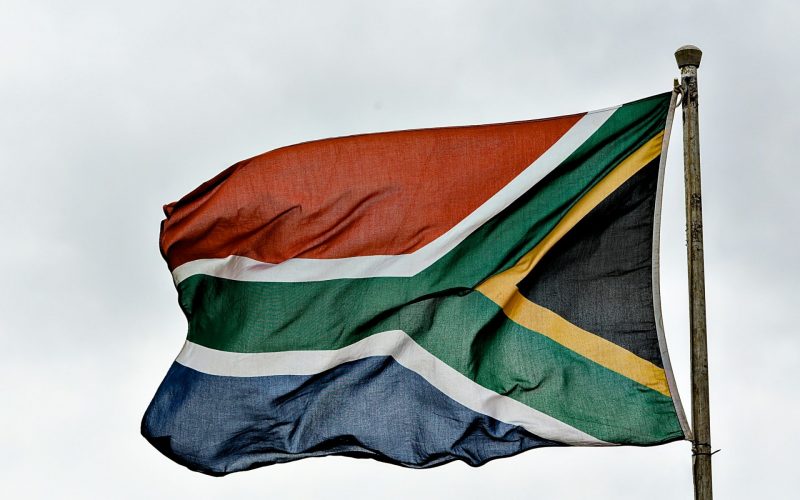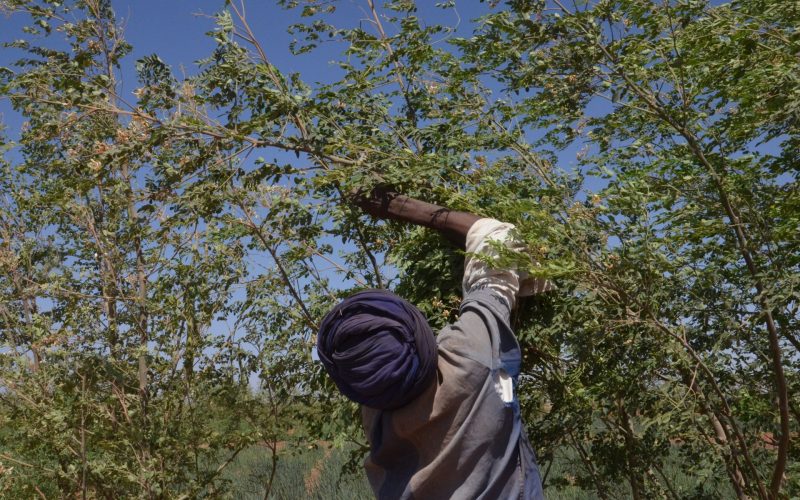Recommendations
- Enhance finance mobilisation to meet the growing need for financing climate action. Specifically, African countries have considerable need to finance the rising cost of adaptation action; this need must be quantified and supported by adequate finance guaranteed through an internationally agreed commitment.
- Promote the systemic reform of climate funding mechanisms, accompanied by country-level capacity development, institutional reforms, better alignment between national planning processes and funding opportunities, and priority area identification.
- Ensure that pandemic recovery financing is aligned with the Paris Agreement goals and that governments are held accountable for commitments made in this regard.
Executive summary
The availability and accessibility of climate finance are crucial to ambitious mitigation and adaptation action by developing countries. However, the agreed pre-2020 climate finance mobilisation of $100 billion annually by developed countries has not been met in any year since the pledge was made. The issue of adaptation financing is especially important to Africa. By emphasising the needs and priorities of developing countries, the African Group of Negotiators on Climate Change (AGN) is working to ensure that a post-2025 climate finance mobilisation goal of at least $1.3 trillion per year by 2030 is agreed. The UN Framework Convention on Climate Change (UNFCCC) COP process seeks ambitious outcomes in the context of the global COVID-19 pandemic, which has had tremendous social and economic impact. With recovery efforts underway worldwide and political momentum on climate action accelerating, this is an opportune moment to ensure that pandemic responses ‘build back better’ by supporting climate-resilient and sustainable recovery.
Introduction
The COVID-19 pandemic has wreaked havoc on the global economy in many ways. The loss of economic activity, breakdown of global supply chains, rise in unemployment, and other outcomes have taken a lasting toll on national economies and the global economic system. The pandemic has laid bare the inability of the global system to respond to emergencies of this proportion. Poor and developing countries have been exposed to even further challenges, exacerbated by their limited ability to finance health and other essential services or economic recovery stimulus measures. This has worsened the already critical debt crisis in many developing countries. Countries that are already struggling to adequately respond to the pandemic must also find solutions to the global climate emergency.
It should also be recognised that this historical moment, as the world seeks to rebound from the social and economic impacts of the pandemic, provides an opportunity to rethink and reorganise at a systemic level. The world needs a short-term economic recovery plan that does not overlook essential long-term structural transformation towards a more sustainable, equitable and resilient future for all. The recovery period that has started in most parts of the world has resulted in carbon emissions increasing at the second highest rate ever recorded1It should be noted that due to the slow global economic activity resulting from the pandemic, the starting point for this calculation is from reduced emissions, which would therefore result in an elevated rate of increase.. The main question for policymakers and governments is whether the recovery will ‘build back better’ or instead reinforce the status quo of carbon intensive economic activity. The assessment of most recovery plans suggests that the majority of countries have opted for investments that will not assist in greening their economies.2Finance for Biodiversity Initiative, Greenness of Stimulus Index, an assessment, (July 2021), https://www.vivideconomics.com/wpcontent/uploads/2021/07/Green-Stimulus-Index-6th-Edition_final-report.pdf.
With more than $12.7 trillion committed to pandemic recovery globally, only a few countries have pledged to invest in sectors that will contribute to the greening of the economy. About three-quarters of G20 countries will spend their recovery funds in a way that would negatively impact their climate commitments. Other countries, such as South Africa and Russia, will continue with their current policies, which will extend existing negative climate impacts.3Finance for Biodiversity Initiative, ‘Greenness ‘ On the other hand, Germany,4‘A Stimulus Package for Everyone in Germany’, Federal Ministry of Finance, https://www.bundesfinanzministerium.de/Web/EN/Issues/Public-Finances/stimulus-package-for-everyone/stimulus-package-for-everyone.html. France5‘France Relance Recovery Plan: Building the France of 2030’, French Ministry of Foreign Affairs, https://www.diplomatie.gouv.fr/en/french-foreign-policy/economic-diplomacy-foreign-trade/promoting-france-s-attractiveness/france-relance-recovery-planbuilding-the-france-of-2030/., Spain6Miguel Otero-Iglesias and Raymond Torres, ‘Spain´s Recovery Plan: Strengths and Challenges’, Funcas, July 19, 2021, https://www.funcas.es/articulos/spains-recovery-plan-strengths-and-challenges/. and, to a lesser extent, the UK,7Karen Day, ‘UK’s Green Recovery Plan Lacks Ambition and Co-ordination, Think Tank Warns’, Global Government Forum, July 12, 2021, https://www.globalgovernmentforum.com/uks-green-recovery-plan-lacks-ambition-and-co-ordination-think-tank-warns/ have committed to invest in green infrastructure, transport and energy sectors, using their recovery plans to reorient their economies. The Next Generation EU initiative has allocated 37% of recovery funds for green initiatives, including measures to reduce dependence on fossil fuels and improve energy efficiency. The initiative also allocates recovery funds to EU Member States on the condition that they will ensure certain environmental standards are maintained.8European Commission, ‘Recovery Plan for Europe’, Strategy, https://ec.europa.eu/info/strategy/recovery-plan-europe_en.
Climate finance challenges for African countries
Mobilisation and source of climate finance
The pandemic has affected climate finance significantly. Worldwide, the focus on the health emergency and health-related financing has limited the availability of funds for climate-related projects. Donor countries have also seen their budgets squeezed due to the unprecedented fiscal demands of the pandemic, including vaccine research, development and roll out, as well as paying for safety nets and stimulus measures necessitated by the economic downturn.
The mobilisation of adequate climate finance is a major challenge for the Africa region. The pledged amount of $100 billion annually in climate finance support from developed to developing countries is yet to be fulfilled.9The $100 billion pledge was part of the Copenhagen Accord, which was a key output of the 2009 Copenhagen Climate Change Conference, see UNFCCC, ‘Copenhagen Climate Change Conference – December 2009’, https://unfccc.int/process-and-meetings/conferences/past-conferences/copenhagen-climate-change-conference-december-2009/copenhagen-climate-change-conference-december-2009. At COP26, one of the initiatives of the COP presidency was to persuade all developed countries to live up to their financial commitments, and even exceed these. There are growing calls for the transformation of the climate finance architecture to meaningfully support a transition to greener economies and more climate resilient societies for all.10Andrew Gilder and Olivia Rumble, ‘Improving Sub-Saharan Africa’s Access to Climate Change Finance: An Alternative View’, SAIIA Policy Briefing No. 194, April 2020, https://saiia.org.za/research/improving-sub-saharan-african-access-to-climate-change-financean-alternative-view/.
However, additional attention needs to be paid to adaptation financing, including commitment to an adaptation goal under the Paris Agreement. The Paris Agreement’s climate goal and the $100 billion climate finance pledge have done much to galvanise and frame the need for quantifiable and verifiable commitments. A similar goal could, therefore, be applied on a global scale. African countries should push for such a commitment and work with partners to quantify appropriate targets and timelines. African countries spend up to 9% of their GDP financing adaptation actions and such a burden needs to be supported by a global financing mechanism.11Tanguy Gahouma-Bekale, ‘COP26 on Climate: Top Priorities for Africa’, UN Africa Renewal, July 15, 2021, https://www.un.org/africarenewal/magazine/july-2021/cop26-climate-top-priorities-africa.
The AGN is already working to ensure that a climate finance mobilisation goal of at least $1.3 trillion per year by 2030 is agreed.12Emma Rumney, ‘African governments want climate finance to hit $1.3 trillion by 2030’, Reuters, October 06, 2021, https://www.reuters.com/business/sustainable-business/exclusive-african-governments-want-climate-finance-hit-13-trillionby-2030-2021-10-06/ They are calling for the mobilised finance to be allocated evenly between mitigation and adaptation and a significant percentage of the financing to be made available on a grant basis. In calling for a more ambitious climate finance commitment, the AGN is emphasising the centrality of the needs and priorities of developing countries and, in particular, the special circumstances of Africa.
There continues to be uncertainty around the implementation of Article 6 of the Paris Agreement. The Article supports cooperation among states in implementing their nationally determined contributions towards emission reduction, with a global carbon price a central aspect that system. As negotiations on Article 6 are taken forward, the matter of where the proceeds from such a mechanism should be allocated will need to be resolved. These proceeds could provide an essential source for climate finance, especially adaptation financing.
Furthermore, the engagement and level of involvement of the private sector in mobilisation and allocation of climate finance is an important issue. Public climate finance alone cannot achieve the Paris Agreement climate goals; private finance will need to make a significant financial investment in mitigation and adaptation activities. For example, engaging with the private sector can be done through co-financing and de-risking of investments. There is a need for further engagement and strengthening of the role of the private sector and other non-state actors (such as NGOs) as it relates to mobilisation of climate finance, utilisation of climate finance, and support for more sustainable economic activity.
Access to climate finance
Developing countries face a variety of challenges in accessing climate finance, including overly complex application procedures, prohibitive demands for co-financing, and knowledge and capacity constraints in accessing funds.
To utilise available climate finance, countries have to develop their capacity. A critical element is building awareness of available climate resources and the procedures required to access these. This is a complex and constantly shifting landscape. These challenges are exacerbated by the unpredictability of climate finance made available by developed countries through institutional mechanisms. The amounts made available and the frequency of replenishment of climate funds – though a legal obligation under the UNFCCC and the Paris Agreement – depends to a significant degree on the political will within developed countries. There is limited accountability for not fulfilling climate finance pledges. Even for those countries that have the experience and capacity to effectively secure and utilise climate finance, it is difficult to develop plans compatible with domestic planning and funding cycles.
The capacity problem extends to some countries’ limited ability to prepare project pipelines and effectively coordinate implementation. There is a need for capacity building in this regard. Tying financing to technical support programmes might ensure that the governance and administration of projects is undertaken in a way that promotes country ownership and sustainability. In Mozambique, for example, the coupling of financing for climate resilient road projects with technical assistance programmes has resulted in new domestic standards and policies.13‘Paving the way to a resilient future in Mozambique’, Climate Investment Funds, September 11, 2018, https://www.climateinvestmentfunds.org/news/paving-way-resilient-future-mozambique. This approach may be applied to future projects and additional sectors.
An important element of the capacity challenges for many developing countries is the availability of climate data and modelling that is required to build ‘climate rationales’ for projects so that they can qualify for climate finance. Projects submitted for climate financing need to contain detailed analysis of how the project will contribute to climate goals and establish the project’s climate purpose. This requires relevant data and the capacity to perform the required modelling and analysis. These and other capacity constraints limit the absorption capacity of many African countries for climate finance.
Furthermore, there is mismatch between country priorities and funder expectations. This can mean that countries are unable to access available funding. The question of adaptation financing is an example in this regard. In the Green Climate Fund, for example, although there are commitments to disburse funds equally between adaptation and mitigation projects, funds have primarily gone to mitigation.14Mohamed Bakarr, ‘Climate Finance and the Urgency for Adaptation in the Developing World’, The GEF, May 12, 2021, https://www.thegef.org/blog/climate-finance-and-urgency-adaptation-developing-world. Adaptation project proposals may be assessed as not having a sufficient climate rationale and are then rejected as development projects, which do not fall under the funding priorities.15Harjeet Singh and Indrajit Bose, ‘Artificial Distinction Between Climate Change Adaptation and Development Restricts Access to Climate Finance for Developing Countries’, Heinrich Böll Stiftung, June 30, 2021, https://us.boell.org/en/2021/06/30/artificialdistinction-between-climate-change-adaptation-and-development-restricts. Such decisions point to a need to reform the requirements for climate finance eligibility and technical assistance. Such technical assistance should include training on the collection, organisation and analysis of data for climate action.
COVID recovery and climate finance
With recovery efforts underway around the world, and political momentum on climate action accelerating around COP26, this is an opportune moment to ensure that pandemic responses ‘build back better’ by supporting climate resilience and sustainable recovery. Climate finance can play an important role in embedding sustainability and resilience in the social and economic systems that emerge from the pandemic. Climate action and pandemic recovery is a joint task for all, and there is a need for a renewed emphasis on the importance of multilateralism in addressing this challenge. The principles of multilateralism were strained in the competition for vaccine development and access; now, in the recovery phase, countries must cooperate to bring about essential changes.
Recovery planning and funding need to be subjected to accountability measures to ensure their contribution to the greening of the global economy. One way to achieve this is through the Nationally Determined Contributions (NDCs) developed under the Paris Agreement, through which countries set climate goals and prioritise climate action. The NDCs can be used to track and trace country’s climate action and the impact of pandemic recovery measures on these plans. Countries can update their NDCs with commitments on how they will spend recovery funds. The inbuilt reporting and assessment mechanism of the NDCs can then measure how well countries are progressing towards their climate targets.
There is an important opportunity to mainstream climate action through the improvement of socioeconomic policies. When considering ways to revitalise the job market, governments need to look to greener jobs that simultaneously support livelihoods and build more climate resilient economies.16Lukasz Krebel et al., Building a Green Stimulus for Covid-19: A Recovery Plan for a Greener, Fairer Future, (The New Economics Foundation, July 2020), https://neweconomics.org/uploads/files/green-stimulus-covid.pdf. New infrastructure programmes, economic stimulus measures and social service interventions should be assessed in terms of their climate impact. Countries should not miss the opportunity to reorient activities toward climate action.17Climate Investment Funds, How Can Climate Finance Support Covid-19 Recoveries, learning brief, (October 2020), https://www.climateinvestmentfunds.org/sites/cif_enc/files/knowledge-documents/how_can_climate_finance_support_covid-19_recoveries_cif_lessons.pdf.
Small scale businesses that are affected by the pandemic can be supported effectively through well-organised efforts involving local level governments. Local level empowerment in terms of accessing and utilising climate financing is essential if recovery programmes are to succeed.
Developing and implementing long-term plans and programmes that are informed by national climate commitments, which leverage the transformative potential of climate financing, can only occur if the appropriate institutional framework is in place. Countries should strengthen institutions within their domestic policy space and improve alignment with the Paris Agreement. These institutions are instrumental in managing already deployed finance to ensure countries benefit in a transformative, inclusive, efficient, and effective manner.
Conclusion
There is a global consensus that more ambitious climate action is required to achieve the Paris Agreement goals. The availability and accessibility of climate finance are critical factors in securing the level of ambition required in terms of both mitigation and adaptation action. However, the pledges by developed countries to provide $100 billion annually for climate action are yet to be fulfilled. Global allocations to climate finance should be on the rise, but current efforts are falling far short of what is required. Parties to the Paris Agreement must agree to a more comprehensive finance package to address these needs. The existing finance architecture, which favours mitigation action, should be reformed towards a more balanced approach between mitigation and adaptation. A clearly quantified and assessed adaptation goal can help ensure that more adaptation funding is made available. Finally, countries should seize the opportunity presented by the pandemic and the recovery process for a systemic rethinking of climate finance. Central to this is ensuring the compatibility of recovery packages with Paris Agreement commitments.
Acknowledgement
This briefing has been published as part of the project Climate Finance Innovations Towards COP26, funded by the Konrad-Adenauer-Stiftung Regional Programme on Energy Security and Climate Change in Sub-Saharan Africa.
SAIIA gratefully acknowledges the support of the Konrad-Adenauer-Association.







